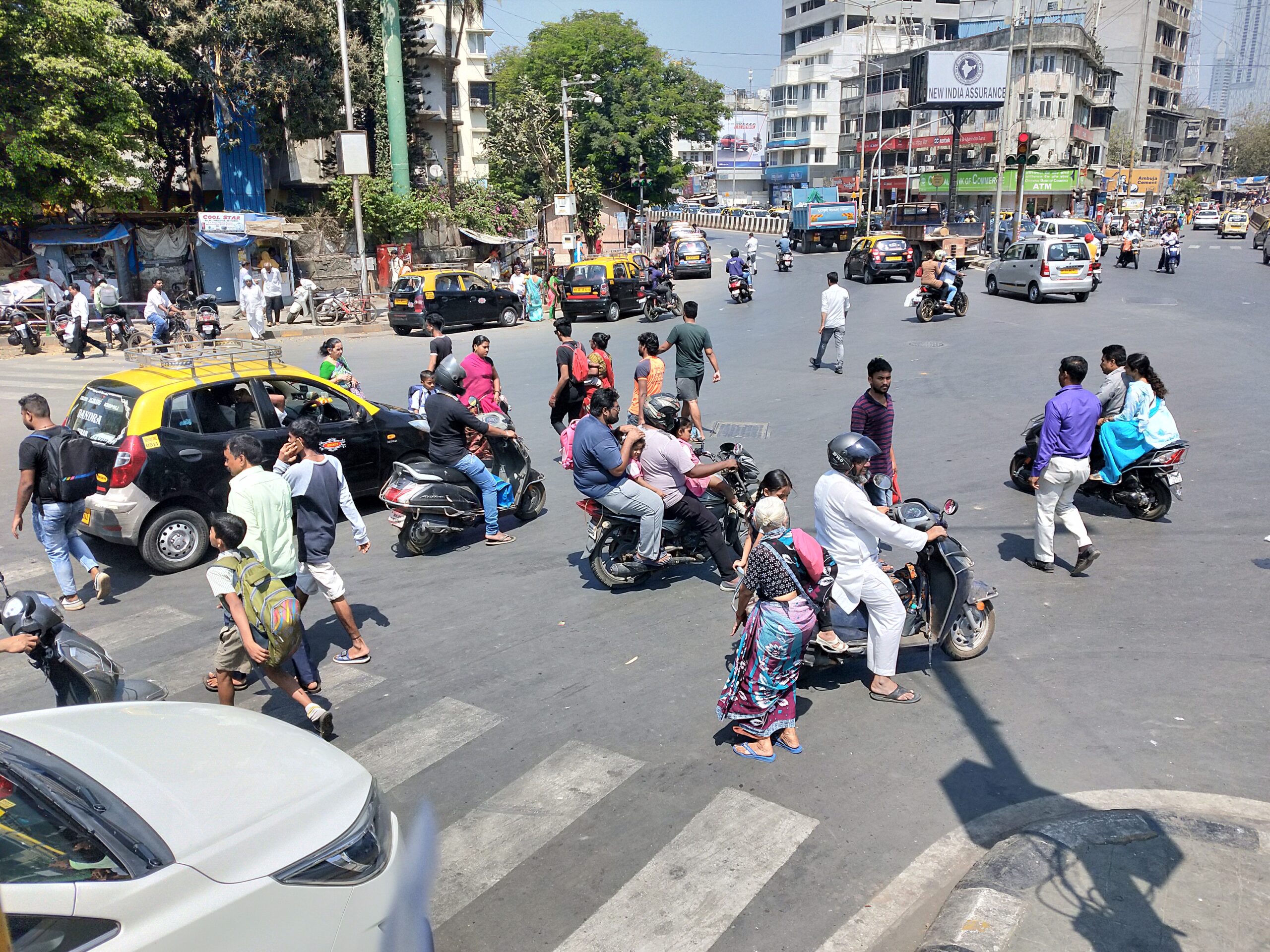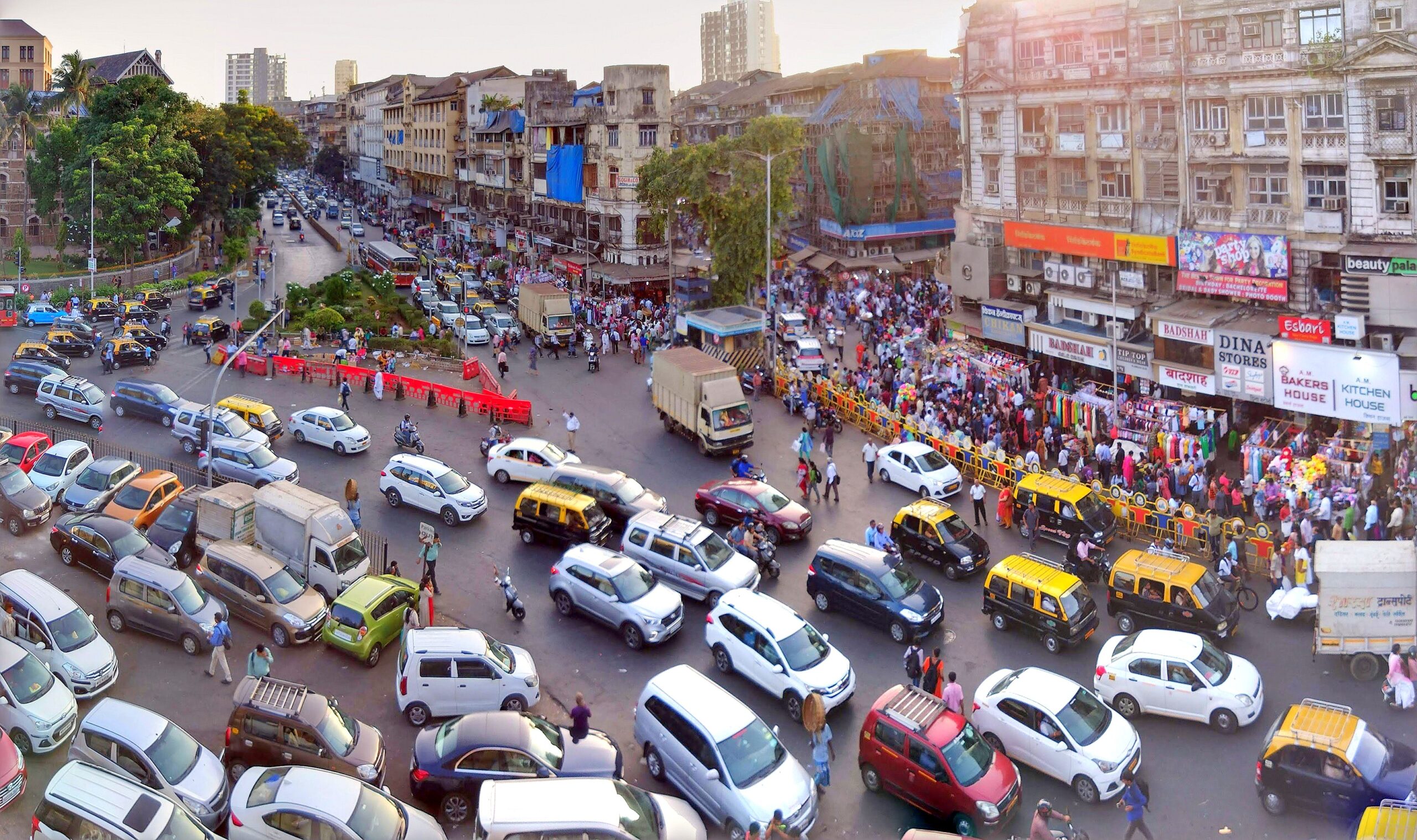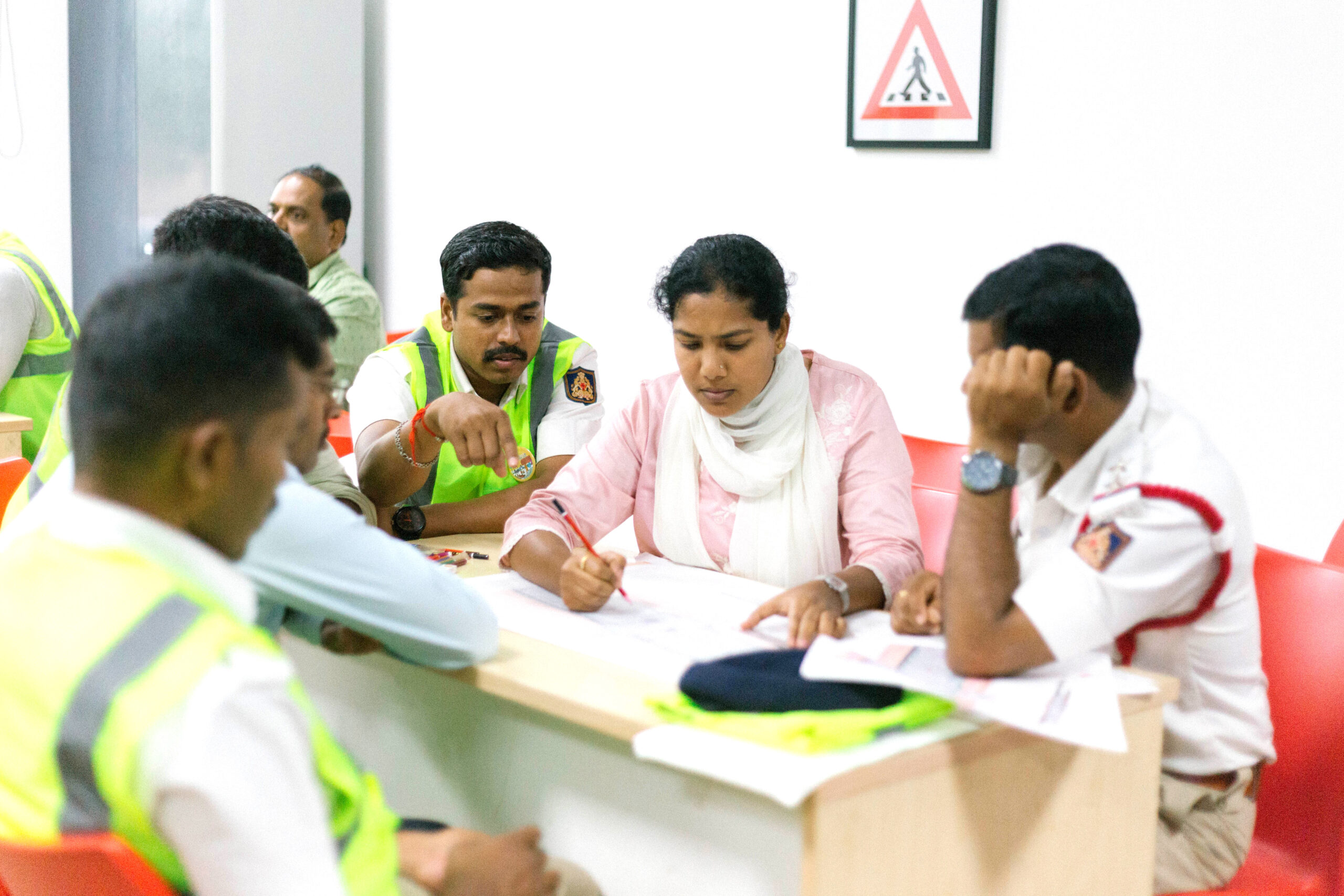
Most people in India walk – to work, to the market or to the railway station. According to the 2011 Indian census, 48% of people walk or cycle to work every day compared to the less than 3% of people who use private vehicles. However, the infrastructure in place for non-motorized modes is inadequate. Pedestrians are often forced to walk on broken footpaths and cross unsafe junctions or, worse, compete with vehicles for space.
Over the years, several efforts have been made to transform streets in Indian cities. These include national-level street programs, “open street” events, policy changes, city-wide network plans and pilot street transformations. While these initiatives have helped demonstrate the need for safer and inclusive streets, the alarming increase in road crash fatalities, congestion, air and noise pollution and lack of quality public spaces in Indian cities makes it imperative to scale-up street transformations for the growing populace.
At the Urban Mobility India Conference and Expo 2022, an annual flagship event held by the Ministry of Housing and Urban Affairs and the Government of India, WRI India partnered with ITDP India to bring together key stakeholders from various cities to understand how to change city streets faster, in more places.
Set the Right Priorities

The last decade saw a striking increase in the number of vehicles on Indian roads, from 178 million to 368 million. Catering to this ever-increasing growth has resulted in cities building more highways and expressways, and widening existing arterials, reducing space for pedestrians and cyclists.
However, to ensure the safety and well-being of all road users, it is crucial for cities to prioritize designing streets that work for everyone, especially the large number of people who walk in Indian cities and are also the most vulnerable to crashes. Therefore, the focus needs to shift from moving cars to moving people, which should be reflected in urban street transformations from inception.
WRI analysis of 53 countries found that cities that have taken a “safe system” based approach to road design and policy have achieved both the lowest rates of fatalities per 100,000 inhabitants and the greatest reduction in fatality levels over the past 20 years. Pedestrians, cyclists and motorcyclists are referred to as vulnerable road users since they are more prone to injuries in the event of a collision with a vehicle. To enable this shift in the agenda, cities should set specific targets and goals with clear timelines for implementing safe system measures. Roles and responsibilities for all stakeholders, including both government and non-government actors, should be established to ensure accountability and the ability to track progress.
Focus on Shorter Trips
The pandemic put a spotlight on the importance of walkable neighborhoods. In 2020, Paris announced plans for a “15-minute city” where people can access jobs, retail services, health facilities, cultural spaces and public spaces within a 15-minute radius on foot or bike. In India, 56-72% of trips in medium and large cities are less than 5 kilometers. During peak hours, it takes 25 minutes to cover this distance by car and only 12 minutes by bicycle – and that’s with less-than-ideal cycling infrastructure.
Making shorter trips by bike or foot easier and safer is an opportunity to convert shorter trips from being car-dominated. The right infrastructure interventions can help spur and support momentum: walkable footpaths, cycle lanes, speed-calming measures and at-grade protected crossings.
This reduction in car usage will result in decreased emissions and pollution for everyone. Additionally, walking and cycling are forms of physical activity that can improve overall health and well-being.
Improve Access to Mass Transit

Since 2010, India has invested around INR 20 trillion ($25 billion) in metro rail systems with a projected expenditure of INR 3 trillion through 2026. But despite these huge investments, research and surveys done by WRI India show that last-mile connectivity and multimodal integration remain major issues across many metro networks.
For example, a walkability rating of the three main access routes to the DN Nagar Station in Mumbai revealed insufficient and poorly maintained pedestrian infrastructure. Similar issues have been observed in Bengaluru. Lack of good pedestrian infrastructure not only reduces accessibility to metro stations but also puts the lives of commuters at risk.
Creating safer infrastructure around transit stations is necessary to make first- and last-mile journeys safe and comfortable.
Efficient Utilization of Funds
A study conducted by the Indian Institute of Technology Bombay and National Institute of Technology Hamirpur on pedestrian bridges in Mumbai showed that few metro riders use them outside of a few major stations. Even though data suggests that most of these bridges, as well as pedestrian underpasses, are heavily underutilized in Indian cities and are not effective at reducing fatalities and injuries, municipalities continue to invest heavily in building more. The assumption is that people would prefer to climb two stories up and down, or use dark and dingy underpasses, just to cross 20 meters of road space.
A comparative study undertaken by the Global Designing Cities Initiative for the city of Addis Ababa in Ethiopia demonstrated that for the cost of construction of one foot-over bridge, the city could make 25 intersections safer using interim interventions.
Building more pedestrian bridges and underpasses is not an efficient use of city funds (nor are they safe, especially for the elderly and women), when we could simply provide pedestrian crossings at grade along with safe waiting spaces for less money and effort and more uptake by users.
Building System Capacity

Street improvement projects in India focus mostly on the structural strength and materials used to build streets. Traffic engineering (conducting traffic studies and analyzing traffic volumes, including pedestrians and non-motorized transport users) and urban design (inclusive and holistic approaches to street and sidewalk design) need to be brought into practice.
Capacity building for city administration and induction of traffic engineers and urban designers into the system is essential to ensure more effective implementation and make the processes sustainable for cities. Dedicated staff for street design and research can also enable city administrations to review and undertake street improvement projects while ensuring that a more holistic approach is adopted.
The Way Ahead
The discourse around transforming streets in urban India has been mainstreamed in the last few years with several cities undertaking initiatives to pilot major projects. However, the efforts have been limited to a few places. We need to institutionalize processes across the country to scale up street transformations and make cities more inclusive and safer for all.
Chetan Sodaye is Senior Program Associate with the Sustainable Cities and Transport Program at WRI India.
Akanksha Aggarwal is Senior Program Associate with the Sustainable Cities and Transport Program at WRI India.





